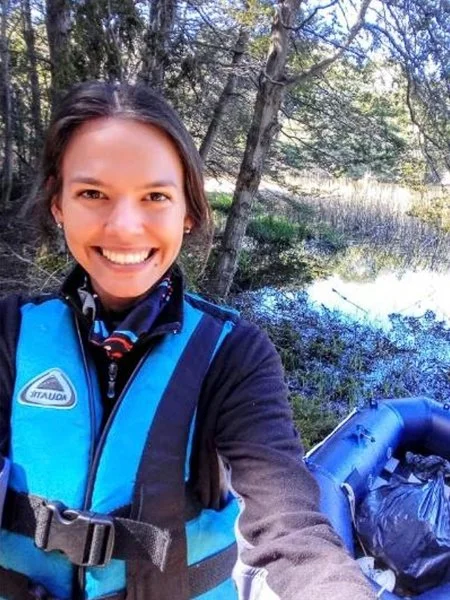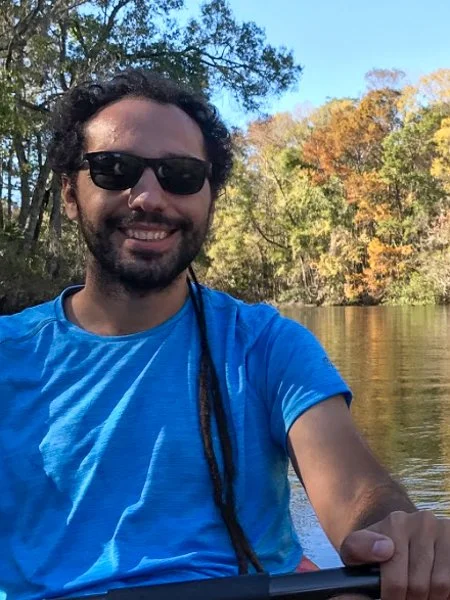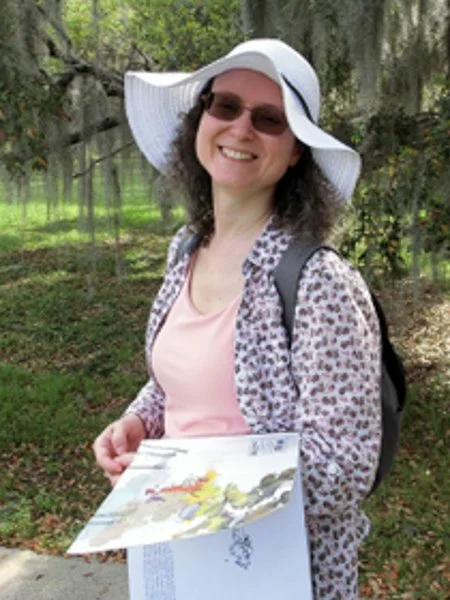Visiting Scientists and Students
-

Adelaine Michela Figueira
I am a professor in the Natural Sciences Program at the Federal University of Western Pará (UFOPA), located in Amazon Region, Brazil. My collaboration with the Spencer lab began in 2010 during an exchange at the Woodwell Climate Research Center, where I contributed to the Global River Observatory team in initiating studies in the Amazon River basin. Recently, I visited the Spencer lab to share my insights as a researcher and educator working in the Amazon region. My research focuses on understanding the biogeochemical processes of Amazonian ecosystems, particularly soil carbon and nitrogen dynamics, the effects of land-use change, and the sustainability of agricultural practices. In addition to my scientific research, I am dedicated to science communication and education in the Amazon, working actively to make scientific knowledge accessible to young people in the region, particularly students in riverside communities, using art as an innovative tool for knowledge dissemination.
-

Carolina Mansilla Ferro
My research explores how changes in precipitation patterns influence the origin, quality, and diagenetic state of dissolved organic matter (DOM) in shallow lakes along a striking bioclimatic gradient in the Argentinean Patagonian Andes. Within just 50 km east of the Andes, annual precipitation drops from 3000 to 800 mm/year, mean temperature rises by 2°C, and volcanic soils show a 20-fold increase in carbon and nitrogen, while vegetation transitions from Valdivian rainforests to subhumid ecotonal forests. Combining fieldwork, advanced analytical techniques, and modeling, I study spatial, interannual, and seasonal variability in lake water properties, including physicochemical, biological, and DOM optical characteristics. During my research stay in the Spencer lab, I applied FT-ICR MS to analyze the molecular composition of DOM in these Andean Patagonian lakes, and in the leachates from litter and soils along the gradient. My research aims to advance understanding of how hydroclimatic changes influence carbon processing at watershed scales, with implications for regional biogeochemical cycles in this understudied area of South America.
-

José Mauro S. Moura
I am a Full Professor at the Federal University of Western Pará, Brazil and have been collaborating with Dr. Spencer since 2011. This partnership has been instrumental in advancing research on the Amazon, the world's largest river system. Together, we have led groundbreaking studies on water chemistry and dissolved compounds, shedding light on the intricate dynamics of Amazonian rivers and wetlands. This collaboration, strengthened by connections with the Woods Hole Oceanographic Institution and the Woodwell Climate Research Center, has provided invaluable opportunities for both Amazonian and international students. Through their mentorship, students have contributed to pioneering research on how these ecosystems process, emit, and transport carbon, playing a crucial role in understanding global climate dynamics. My research focuses on the biogeochemistry of aquatic and forest ecosystems, with an emphasis on organic matter flow and greenhouse gas emissions, particularly CO₂ and CH₄. My research, in close cooperation with the Spencer lab, has significantly enhanced scientific understanding of these vital ecosystems and their broader environmental impact. This enduring partnership continues to drive innovation and inspire the next generation of scientists dedicated to the Amazon.
-

Joan Pere Casas
My research interests focus on the lateral flux of carbon from land to ocean, with special interest in the sources and fate of dissolved organic matter (DOM) through river networks. I visited as a PhD student at the Catalan Institute for Water Research (ICRA; Spain), where I assessed how in-stream processes shape DOM from headwaters to the sea using Mediterranean rivers as an archetype. I am also particularly interested in deriving a mechanistic understanding of organic matter degradation and the relative influence of intrinsic versus extrinsic factors.
-

Lin Feng
I visited the Spencer lab during my time as a PhD student at the Northwest Institute of Eco-Environment and Resources, Chinese Academy of Sciences (Lanzhou, China). My research interest focuses on dissolved organic matter (DOM) released from glaciers due to climate change, with special interest in the composition, sources and biogeochemical effects of DOM derived from glacier environments. The primary focus of my current research is examining the biogeochemical transformations of DOM in glacier ecosystems, and discovering the linkages between microbial communities and the molecular composition of DOM based on multiple analytical tools.
-

Ruben del Campo Gonzalez
I visited while a PhD student from the University of Murcia in Spain (Dept. of Ecology and Hydrology) and a lot of my research centers around dissolved organic matter (DOM) in aquatic ecosystems. I am particularly interested in how different flow regimes in ephemeral systems impact the quality, and thus biogeochemical role of organic matter in the environment. I have been working with the Spencer lab to characterize DOM via a range of techniques so we can begin to develop a more mechanistic understanding of how changing land-use and flow regimes will impact the exported material.
-

Elizaveta Litvak
I work at the Urban Ecology Research Lab at the University of Utah. My research is focused on the effects of urbanization on local hydrology and climate. Particularly, I investigate physiological responses of urban trees and lawns to their surroundings, which play a key role in shaping up urban water fluxes and temperature regimes. My field campaign in Tallahassee involves the measurements of hydrologic fluxes associated with vegetation, as well as environmental and social factors that may control them. I am very excited about working with Tallahassee’s rich and diverse urban forest. As a city with the highest tree cover in the US, Tallahassee will provide invaluable information about the effects of urban forests on the environment.
-

Alexandra Veremeeva
I was a visiting student during my time as a PhD student at the Institute of Physicochemical and Biological Problems in Soil Science (Russian Academy of Sciences, Pushchino, Russia). I conduct spatial analysis of territories underlain by Yedoma permafrost in north-eastern Siberia and examine how thermokarst lake area is changing in Siberia due to climate influences. Accurate quantification of both of these terms is important for improving our estimates of carbon storage in the region and how it is responding to climate warming.
-

Yinghui Wang
I’m interested in high-altitude permafrost carbon release due to climate change and its impacts on biogeochemical cycling. As a PhD student at Peking University (China) I was a visitor to the Spencer lab, whilst focused on thermokarst processes on the world’s highest plateau (Qinghai-Tibetan Plateau), which is particularly sensitive to the effects of climate change. With a variety of analytical tools, I investigate the transformations of permafrost carbon and assess the potential of ancient permafrost organic carbon as a carbon substrate for downstream receiving ecosystems.
-

Yongqiang Zhou
I visited the Spencer lab whilst a PhD candidate at the Nanjing Institute of Geography and Limnology, Chinese Academy of Sciences (Nanjing, China), I conduct research on the sources and bioavailability of dissolved organic matter in inland waters (China) using spectral absorption and fluorescence, as well as stable isotopes. I’m currently very interested in investigating the linkage between greenhouse gas emissions and the compositional dynamics of dissolved organic matter.
-

Phoebe Zito
I am an analytical chemist with a focus on the development and implementation of methods for determining composition and structural changes as a result of photochemical processes in the fields of biogeochemistry, petroleomics and materials science. Currently my primary research focuses is on applying ultrahigh resolution characterization techniques on organic matter alongside optical analyses to examine dissolved organic carbon (DOC) produced from petrogenic sources.
